bio 455 lab study notes
1/383
Earn XP
Description and Tags
lab final
Name | Mastery | Learn | Test | Matching | Spaced |
|---|
No study sessions yet.
384 Terms
Systematics
field of science concerned with phylogeny and taxonomy
Phylogeny
evolutionary history or development of a group of organisms.
Taxonomy
is the discipline devoted to classifying organisms
Classification
the process by which living and extinct organisms are arranged into various named groups (taxa)
Taxa
(sing, taxon) are groups of organisms ranked in a hierarchy of specific categories or levels of classifications
Nomenclature:
the system for giving distinctive names to different taxa
Identification
assigning of particular specimens to already established and named taxa
how many living orders of mammals are there
26 orders
polytpic
taxon contains more than one taxon at the next lower level, (Class Mammalia –contains many orders)
monotypic
taxon at any level contains only a single taxon at the next
lower level, (genus Antilocapra - only one species Antilocapra
americana, but several subspecies)
Zoological Nomenclature
system of scientific names applied to taxa of animals, living and
extinct. Created by Carolus Linnaeus –Systema Naturae (1758)
Speciation
splitting off of a new species – occurs when a group of interfertile individuals become geographically and reproductively isolated and evolve separately
Subspecies
uniform and genetically distinct portion of a species, representing a separately or recently evolved lineage with its own evolutionary tendencies
species
basic unit of taxonomy; groups of interbreeding natural populations that are reproductively isolated from other such groups
Sympatric Species
overlap geographically, do not interbreed
Parapatric Species
contiguous ranges, do not interbreed
Allopatric Species
non-overlapping ranges, likely not to interbreed
Sibling species
sympatric species that are reproductively isolated but morphologically indistinguishable
animalia
• Eukaryotic, multicellular
• Heterotrophic
• Motile during at least part of their life
chordata
Dorsal nerve tube
vertebrata
Brain and spinal cord enclosed in, and protected by, a bony skeleton
defining characteristics of Mammalia
skeletal, hair/fur, mammary glands, 4 chambered heart, enucleate erythrocytes, muscular diaphragm
Mammalia skeletal
- Lower jaw (mandible) composed of the dentaries: a single pair of bones (body and ramus) which articulate directly with the cranium
- Articulation between the dentary and the squamosal
- Three ossicles in the middle ear (modified articular and quadrate bones)
- Two occipital condyles
4 chambered heart
heart with functional left aortic arch
muscular diaphragm
separating the thoracic and abdominal cavities
Compare the position of the orbits
-Chimpanzees & Lynx → Forward-facing orbits (binocular vision for precision and depth perception)
-Beavers → Slightly lateral orbits (balance between predator detection and binocular vision)
-Deer → Lateral orbits (wide field of view for predator awareness.
Compare the placement of the foramen magnum
opossum:
posterior placement of foramen magnum,quadrupedal locomotion and semi-arboreal posture.
gorilla:
More anterior placement of foramen magnum. Knuckle-walking locomotion and semi-bipedal posture.
moose:
Posterior placement of foramen magnum, Quadrupedal locomotion and large herbivore posture.
squirrel:
Slightly ventral placement of foramen magnum, Quadrupedal locomotion and arboreal posture.
beaver:
Posterior, angled downward placement of foramen magnum,
Quadrupedal locomotion and semi-aquatic posture.
crown of tooth
above the gumline
root of tooth
below the gumline (fitting into alveolus or socket)
dentine of tooth
bonelike majority of the tooth
enamel of tooth
covers the crown of the tooth
cementum of tooth
covers the root of the tooth
pulp of tooth
supplied with blood vessels and nerves
lingual
side of a tooth closest to the tongue
buccal
side of a tooth closest to the cheek
mesial
front side of a tooth
distal
back side of a tooth
anterior
teeth on front of the mouth
posterior
teeth on the back of the mount
occlusal surface
surface of a tooth that meets with a tooth in the opposing jaw
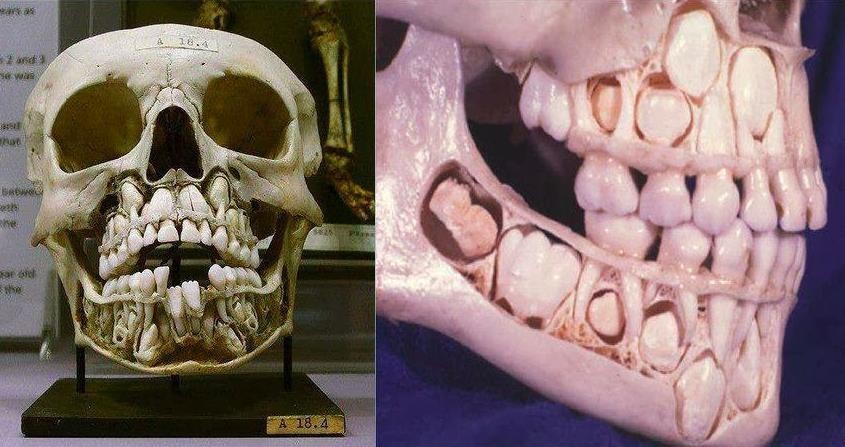
Diphyodont Tooth Replacement
deciduous milk dentition, Most mammals. 2 sets, baby and adult.
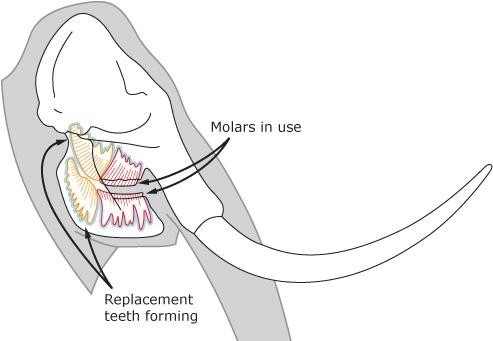
Polyphyodont Tooth Replacement
multiple replacements - Elephants, manatees, kangaroos
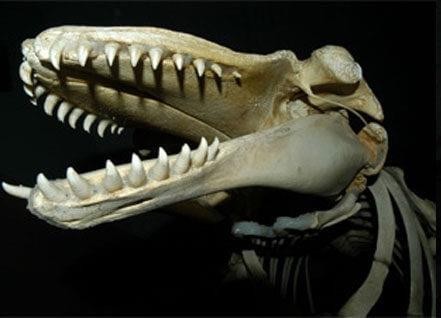
Monophyodont Tooth Replacement
one set of teeth - Toothed whales, rodents
heterodont kinds of teeth
several forms of teeth
homodont kinds of teeth
all the same teeth
edentulous kinds of teeth
without permanent teeth
kinds of teeth
incisors, canine, premolars, molars
teeth quadrants
there are 4
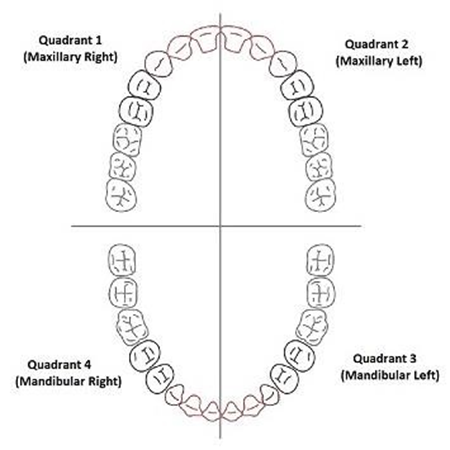
incisors
-Never more than three incisors in each jaw quadrant (some exceptions for marsupials)
-Unicuspid teeth with a single root
-Usually chisel-shaped teeth that function primarily for nipping
-Many modifications
canines
• Never more than one per quadrant
• Long, conspicuous, unicuspid teeth with a single root
• Usually used to capture, hold and kill prey
In herbivorous species reduced or absent (forming diastema)
premolars and molars
• Premolars usually have milk predecessors
• placental mammals with four premolars, 1 premolar does not have a milk precursors
• Molars do not have milk predecessors
• Premolars are smaller than molars and have fewer cusps
• Both premolars and molars are referred as cheek teeth or post canine teeth
dental formula
ICPM
• Shorthand method to indicate the numbers of each tooth type in a particular mammal species
• Teeth are listed and counted in the order they occur in each half of the upper and lower jaw
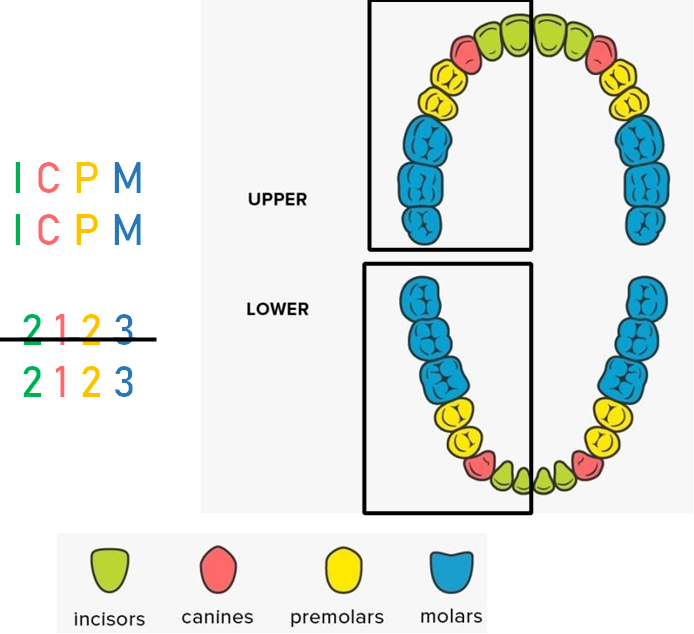
Tribosphenic tooth
occurs in primitive placental and marsupial mammals
Quadritubercular tooth
addition of the hypocone (hypoconid) to have 4 cusps
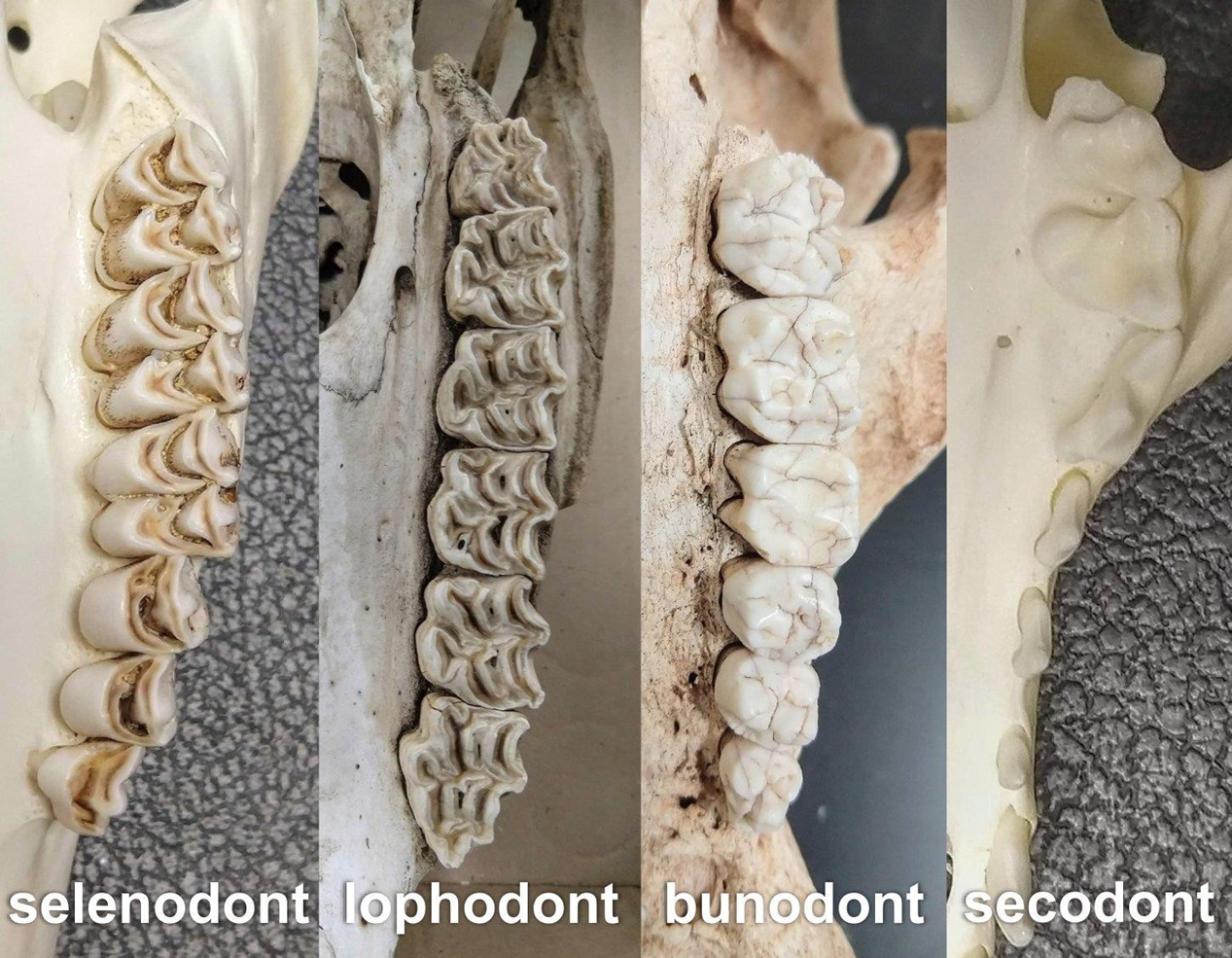
omnivory molar shape
bunodont
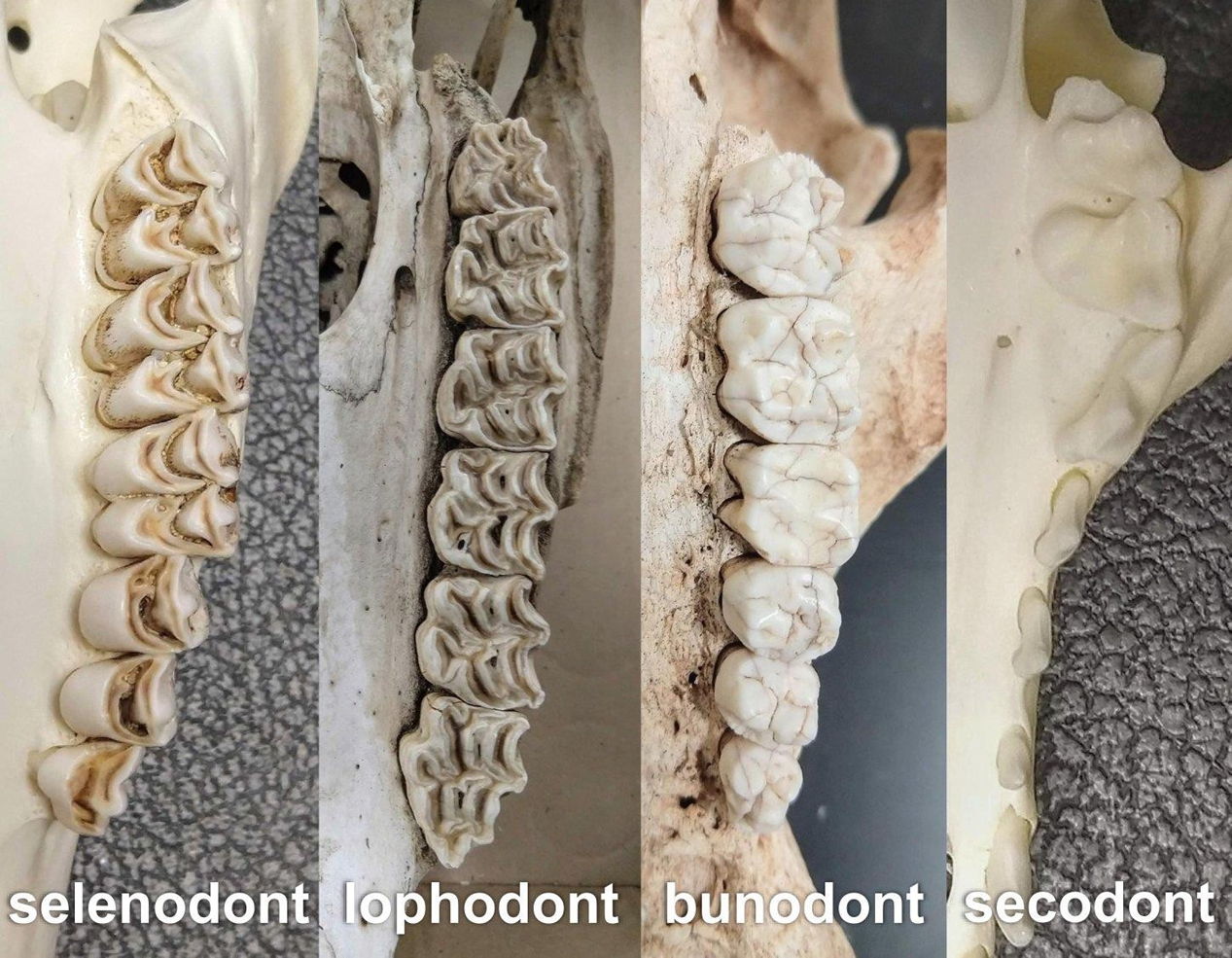
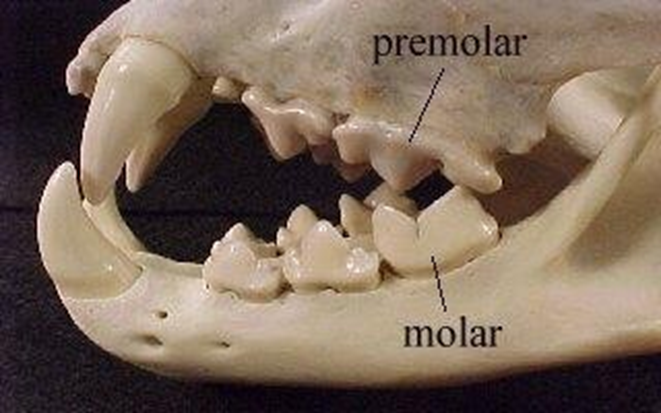
carnivory molar shape
they have a carnassial pair, P4 and M1.
secondont.
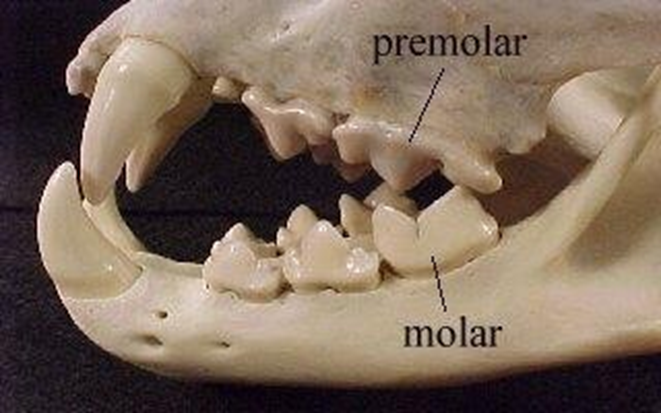
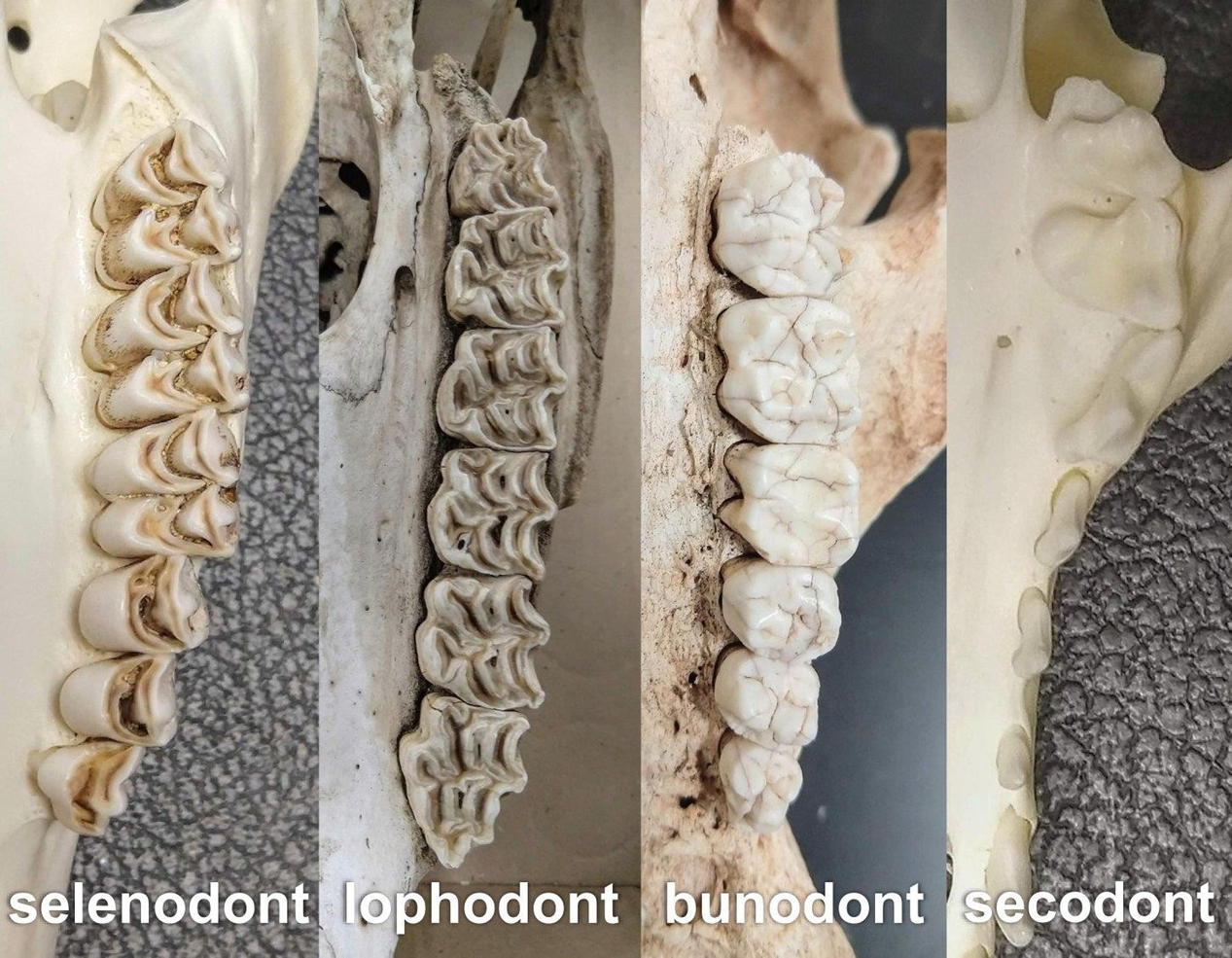
herbivory molar shape
selenodont (u)
lophodont (w)
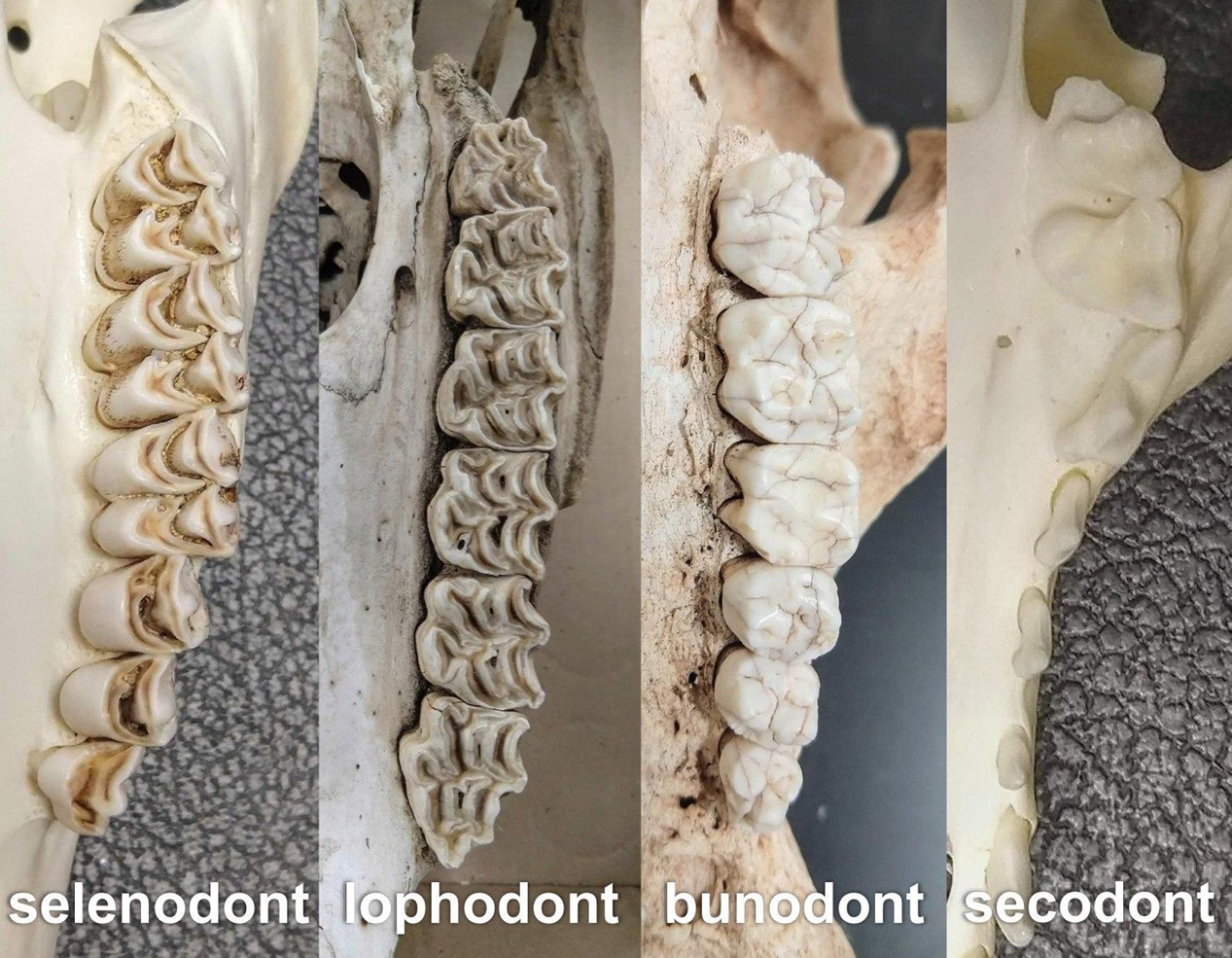
Brachyodont molar height
low-crowned teeth in Omnivory
hysodont molar height
high-crowned teeth, Herbivory
Insectivory → commissures
modified tribosphenic teeth in which the 3 cusps elongate into sharp crescent-shaped cristas (useful to get through insects exo-skeleton).
Piscivory
cheek teeth reduced to a series of sharp unicuspids (holding slippery food)
Edentulous
lack of teeth (anteater)
epidermis
-only living cells in the deepest layers, stratum basale and stratum spinosum
-Stratum corneum: flattened, keratinized dead cell layer
dermis
• Connective tissue, muscles, nerves, blood vessels, sensory structures
• Sometimes bones
hypodermis
fat layer
true dermal bone
True bone formed in dermal layer of integument
epidermal scales
Modified stratum corneum cells create flattened epidermal plates
hair anatomy
• True hair unique to mammals
• Medulla: central core
• Cortex: bulk of hair
• Cuticle: outer layer, composed of cuticular scales
• Pigment granules: melanin
• Erector pilli muscle
angora hair growth
continuous growth, may never be shed
Definitve hair growth
grows to defined length, shed periodically
vibrissae
long, stiff hairs primarily serving as tactile receptors
guard hairs
• Spines: primarily defensive
• Bristles: long, firm with angora growth
• Awns: firm, expanded distal region (warmth)
underhairs
• Wool: angora growth, soft, insulative
• Fur: definitive, fine, densely covering
• Velli: definitive, downy/fuzzy, very fine
molting hair replacement
Most hair types replaced periodically via molting
• Annual molt: once/year
• Seasonal molt: twice/year
juvenile pelage hair replacement
distinct pelage patterns differing from adults
• Typically greyer/duller, but many forms
hair colour
eumelanin- darker colours
pheomelanin- lighter colours
Agouti- each hair displays two or more colours
hair function
for concealment or communication
concealment
Cryptic coloration (polar bear)
Disruptive coloration (leopard)
Countershading (dolphine)
communication
warning coloration (skunk)
reverse countershading (honey badger)
flag (white tail deer)
albinism
lack of all external pigment
leucism
partial loss of pigmentation
melanism
unusually dark pigmentation due to deposition of large amounts of melanin
piebald
exhibits patches of white fur on body
hairless mammals
-Naked mole-rats: Naked mole‐rats have a few hairs on their body but lack a fur coat.
-Marine mammals: hair is significantly reduced in many groups.
o Sirenians (manatees, dugongs, etc.)
o Cetaceans (whales, dolphins)
sweat glands
• Unique to mammals (though some families lack)
• Sudoriferous (empty into hair follicles, be scented)
• Eccrine (onto surface of skin, cooling and tactile)
sebaceous glands
• Secrete fatty substance to prevent brittle hair and
waterproof pelage
scent glands
• Sebaceous or sudoriferous
• Defense, marking territory, and social interactions
mammary glands
• Unique to mammals (MAMMAls)
• Derived from integumentary glands, develop from milk lines
• Present in both sexes, but only reach full maturity in females
monotremes (A)
milk secreted into abdominal depressions
Eutherians (B)
nipples or teats
marsupials (C)
circular arrangement of nipples
horns and antlers
in orders Artiodactyla and Perissodactyla
true horns
• Bovidae family
• Inner bony core extension of frontals, sheathed in keratinized epidermis (horn)
• In both males and females
• Growth throughout life, no shedding
• Growth rings
pronghorns
• The only extant species is Antilocarpa americana
• Shed sheath annually
• Form ”prongs” from new sheath
• Females have no prongs or absent horns
antlers
• Found in members of family Cervidae
• Males only (except Rangifer genus)
• Forms from pedicel, permanent extension of frontal bone that connects to deciduous antlers via burr
• Growing antler “fed” by velvet
• Consists of main beam and tines, shed after mating season
girafffe horns
• Permanent bony processes arising from suture between parietals and frontals
• Ossified from ossicones (centre) and fuse to skull
• NOT projections of the frontal bones
• Permanently covered in skin and hair
• 3rd “horn” sometimes present as a protuberance of the frontals
rhinoceros horns
• Only extant non-artiodactyls with horns
• Hardened epithelial cells formed from
dermal papillae, not fused to bone
• Skin bearing the horn situated over fused
nasal bones (second horn over frontal bones)
function of antlers/horns
Mating, social dominance, and fighting for territory and protection. To help with food.
claws
encase the most distal Phalanx, many variations across orders
nails
modified claw, only covers the dorsal surface of
the distal phalanx, less protection but more dexterity